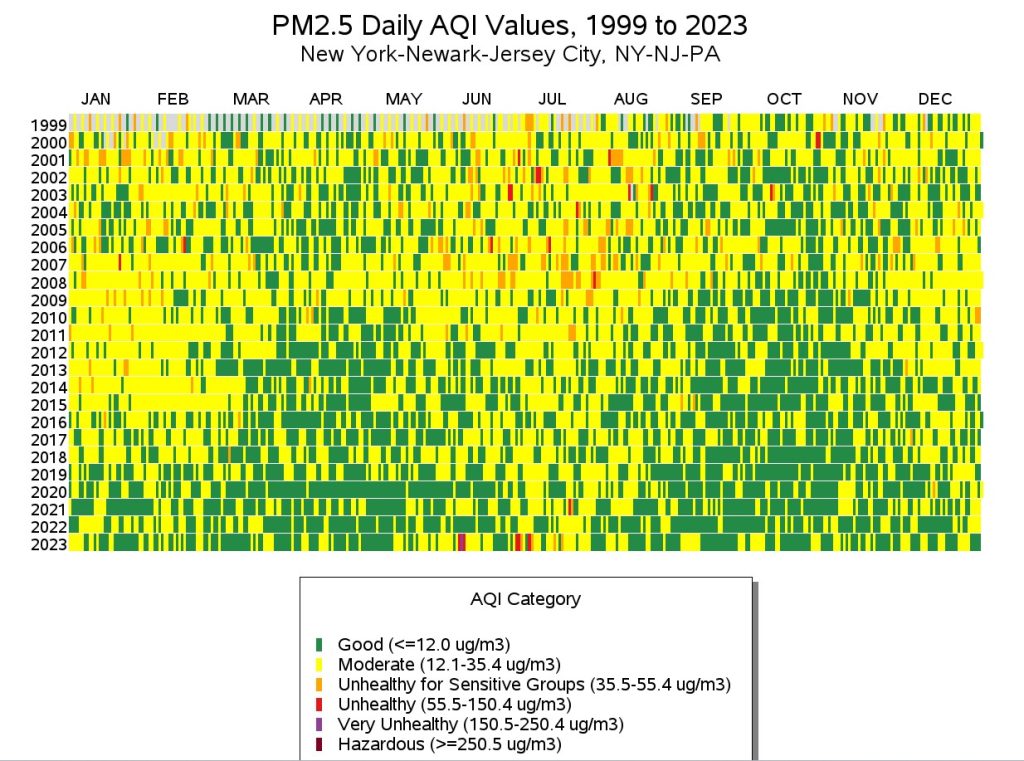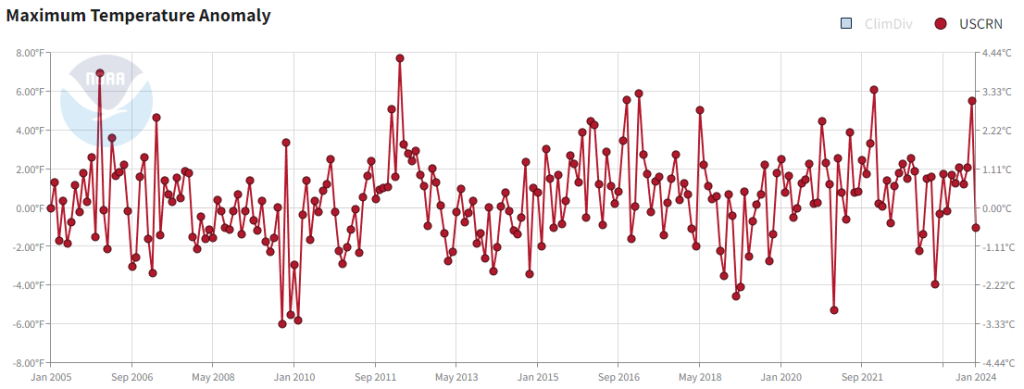By Linnea Lueken and H. Sterling Burnett
A recent article at The Hill claims that climate change is reversing the multi-decade trend of improving air quality in the United States, due to increased PM2.5 from wildfires and ozone from heatwaves, making it unsafe for children to play outside. This is false, air quality is improving, and the suggestion that kids should avoid outdoor play is hazardous to their health.
The article, “Climate change is making it more dangerous for kids to play outside, report finds,” covers a study published by a “climate analytics” firm called First Street Foundation.
To be clear, First Street is a strictly climate alarmist nonprofit group, that often publishes studies meant to frighten the public. Their predictions are based on climate modelling, and tend to ignore publicly available weather data that make their projections seem unlikely to occur in real life. This kind of work should be taken with a grain of salt. Climate Realism has refuted the Front Street Foundation’s false research before in the posts “No, WaPo, Climate Change is NOT Fueling More Devastating Rains and Flooding,” and “No, Axios, Future U.S. Hurricane Damage Losses Will Not be Driven by Climate Change,” for example.
According to The Hill, the study’s authors project that “by midcentury, the increased levels of microscopic soot particles (PM10 and PM2.5) and ozone molecules entering Americans’ lungs will be back to the levels they were at in 2004–before a decades-long federal campaign to clean up the air.”
This is an odd claim, lacking any basis in data. In fact, since the Clean Air Act was enacted in 1963, and the U.S. Environmental Protection Agency outlined its first official standards for particulate matter and ozone in 1971, measured pollutants, including PM10, PM2.5, and ground level ozone have all declined dramatically.
First Street researchers and The Hill claim PM2.5 is being driven up by increased wildfires, but the fact is, wildfires aren’t getting worse due to climate change.
Currently available data from the National Interagency Fire Center show that while there was an increase in total acres burned between 1983 and the early 2000s, it has since leveled off, and the last two years have had some of the lowest wildfire incidences in the United States in recent years. Older data, much of which was expunged from the NIFC website in 2020, show that wildfires were much worse in the early 20th century than they are today. This trend does not track with the theory that wildfires are driven by fossil fuel use, and global warming. (See figure below)

The increase post-1983 is due almost entirely to a change in forestry practices and management, rather than the modest warming of the past few decades, as described in many Climate Realism posts.
Additionally, satellites have been keeping track of wildfires for decades now, and that data clearly show that not only are wildfires not becoming more common or intense, they have declined since the early 2000s.
Since there are fewer wildfires, there is less smoke from wildfires, which means wildfires can’t be causing an increase in bad air days necessitating keeping kids indoors for their health. Environmental Protection Agency (EPA) data confirm this fact. The EPA reports that during the recent period of modest warming, since 1990 PM10 declined by 32 percent. In 2000, the EPA shifted its attention to also monitoring and regulating the emission of smaller particulate matter particles, PM2.5. Since then, PM2.5 has fallen by 37 percent.
With regards to ozone pollution, First Street argues that rising temperatures will increase ground level ozone, especially in major cities. The reality is that the best available temperature data does not show any increase in high temperature anomalies. (See figure below)
Also, the EPA’s air quality index data is available to the public, so we can look at what the air quality trends are for almost any major city. Taking New York City, since it is the largest city in America, we can see that air quality with regards to particulate matter seems to be getting much better in recent years, with only a few bad days last year (2023) due to that summer’s Canadian wildfires, many of which were started by arsonists. (See figure below)

The EPA’s air quality data show that overall, as the Earth has modestly warmed, ground-level ozone has declined 21 percent, since 1990. Once again, if ozone is declining, climate change can’t be making the air less healthy for children.
It is widely believed that many of today’s youths spend too much time indoors, wedded to their computers, video gaming systems, cell phones, and other devices. On this point an MIT study found:
Compared to the 1970s, children now spend 50% less time in unstructured outdoor activities. Children ages 10 to 16 now spend, on average, only 12.6 minutes per day in vigorous physical activity. Yet they spend an average of 10.4 waking hours each day relatively motionless.
Simultaneous to the decline in outdoor play, has been an increase in childhood obesity and associated diseases like diabetes. As a result, advocating keeping kids indoors while air quality is improving endangers their health, rather than protecting them from harm. This is especially true when one realizes that the U.S. EPA has found that indoor air contains two to five times more pollutants than outdoor air on average.
Outdoor air has not become more dangerous for children, but avoiding outdoor play and activities is a proven health hazard. The Hill should cautiously examine studies from organizations like the First Street Foundation with a skeptical eye, and check the hard data and context, before unnecessarily alarming its readers, and encouraging them to take actions that could result in poorer health for themselves and their kids. Climate change attribution is a hammer wielded by climate alarmists with each and every “non-optimal” weather condition or human health threat being nails they can drive their narrative and agenda home with, regardless of what the facts say.


















Another example of distorting facts to make people think that the climate is the cause of everything! No data, facts or even a plausible reason other than a pointless claim! There ought to be some evidence that can be used to support this conclusion from the scientific community but no! They go to their bullhorn 📢 media outlets to blather on about this silliness and ignorance of their own lies! Good thing climate realism responds with the understanding and wisdom that these people lack!